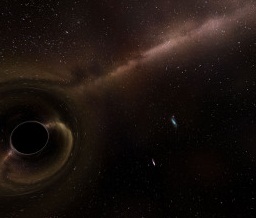
When a trauma occurs in our life, it can either be a catalyst for growth or a glue for psycho-emotional bondage.
In my last post we explored the difference between the finite ego and the absolute Self and how they relate to creativity and the creative process. To review, since the finite ego perceives itself as separate from the world, it always feels a sense of lack or deficiency.
By contrast, the absolute Self, which is the spark of divinity in each and every one of us, experiences the luminous interdependence that makes everything possible.
Let’s continue.
Creativity and choice
In the beginning of the creative process, our ability to create is about choice, a kind of choice that transcends habit. When some vital part of us is lacking in some way, our attention becomes narrow, focusing in on how to rectify the situation. It is difficult, if not impossible to create when we feel a sense of lack.
If we feel lonely, for example, we are driven to go out and connect with others, thereby fulfilling our sense of belonging. But when all our basic needs are met, it allows us to choose, it allows us the freedom to decide how we wish to proceed.
We are no longer bound by a series of knee-jerk reactions to the world around us and creativity becomes a natural expression of our way of being in the world.
It is also important to note that just because we get all of our basic needs met doesn’t guarantee that we will be particularly creative.
How unaddressed traumas thwarts creativity
There are plenty of people in the world who appear to have their basic needs met but fail to live up to their full creative potential. I believe there to be two basic reasons behind this 1) unaddressed traumas and 2) an unwillingness to go beyond primarily selfish motivations. We’ll look at the unaddressed traumas in this post and save selfish motivations for next time.
When a trauma occurs in our life, it can either be a catalyst for growth or a glue for psycho-emotional bondage. If something challenging happens to us, such as an accident, illness, or loss of a loved one, two basic paths unfold before us. If we are able to frame it in a positive light, we learn from the experience and grow. When this happens, our capacity to create can expand and we can move into whole new realms of creative possibility we never before thought possible.
But if we remain bitter, resentful, blame ourselves, or deny that the trauma even happened, that trauma becomes a blockage, a blockage standing in the way of our creative potential. Unaddressed traumas, especially ones we fail to address for years or even decades, are like black holes. They become very hard to see but exert a strong pull on everything around them, warping our ability to make real choices and thus thwarting our creative capacities.